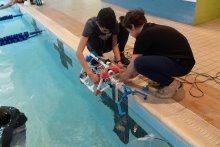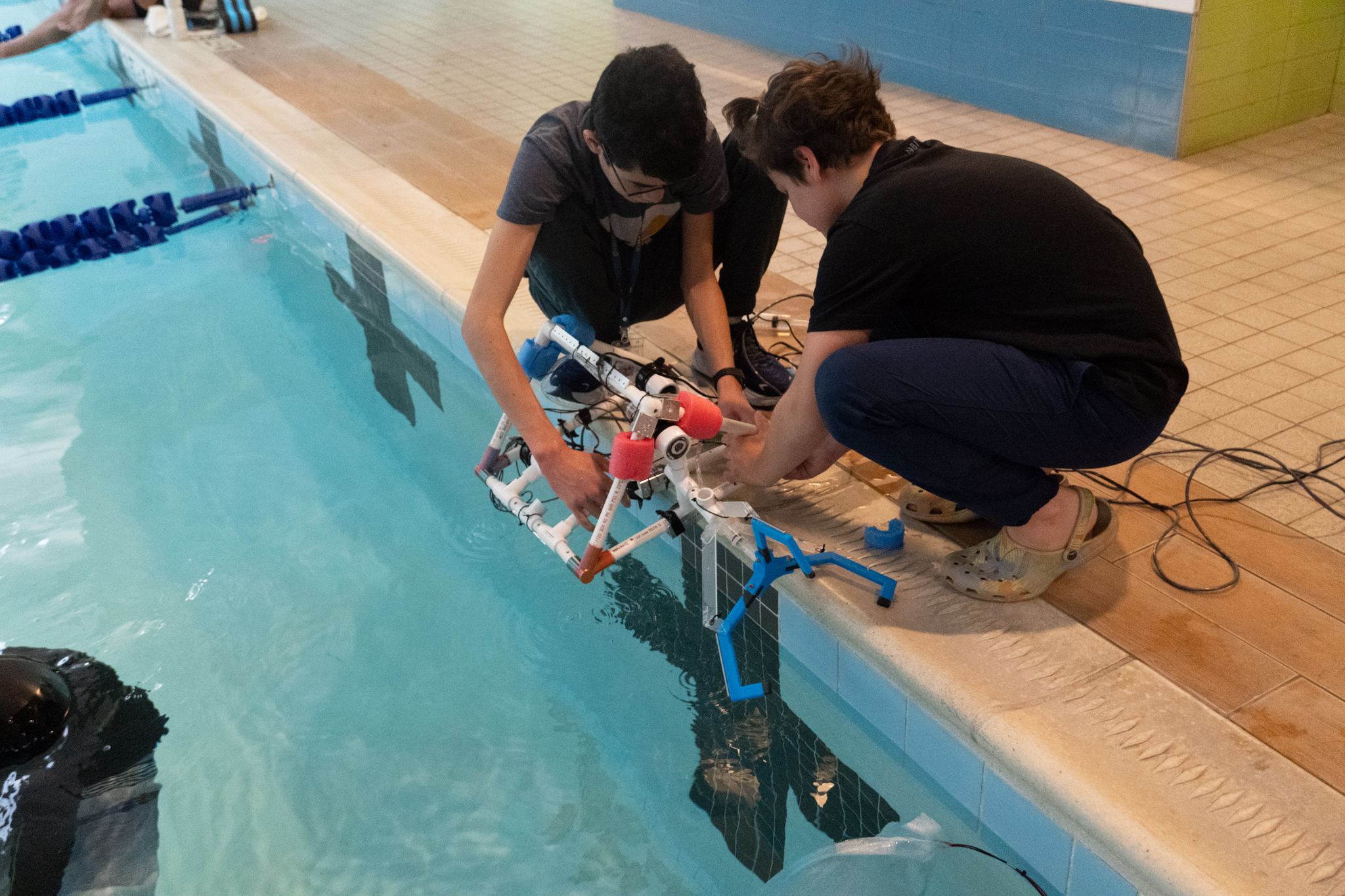
The Field Communications Department Intern Alex ‘27 spent some time observing and learning about our Underwater Robotics Intersession program. Enjoy this story that shares what he observed and what the students accomplished throughout this program.
Imagine two weeks immersed in an interactive course, an internship, or a travel program. At Field, the first two weeks of January are dedicated to Intersession, a deep dive into something new and different from their regular classes. These programs prepare students to complete an overall goal in the form of a project and grow multiple skills along the way.
An example of an Intersession course is Underwater Robotics, where students learn to design, build, program, and test a robot made from PVC, 3-D printed objects, cameras, motors, and parts that can endure underwater submersion and navigation. By remotely controlling their robot, students identify and experience typical difficulties associated with opening doors to let water through or saving a robot that has gone missing.
Students encountered many obstacles and learned from their mistakes while increasing their knowledge of specific engineering skills. An example is when a student found a part that worked great above water, but once submerged, it didn’t sustain its structure and ultimately fell apart. They worked on specific tasks to improve their frame-building, soldering, and problem-solving skills.
Aidan Ferro, one of the Underwater Robotics teachers, wants his students to see a project from beginning to end. He makes this happen by helping students build a framework of ideas for their robots and supporting them when a problem occurs.
The young engineers started by theorizing ideas of their end goal and how they would accomplish it. They continued with the process by completing the bag exercise and creating a test frame from their ideas. A highlight was learning to solder, often for the very first time. The control board group spent multiple days building internals such as motors. The frame building group engineered the robot frame and ran tests to check for buoyancy, stability, and function. The students overcame diverse challenges and developed engineering and technical skills.
On the final day, students visited a nearby pool to test their work and complete a set of challenges. Each robot was unique in shape and size, features such as claw-grabbing mechanisms, and dropping mechanisms. Each robot had to pass three underwater challenges to advance, including the eye, door, and flip maneuvers. In the eye challenge, colored lights blinked in Morse code and it tested the robot's ability to effectively use a camera to display its surroundings underwater to the person controlling it above ground. In the door challenge, the robots had to successfully get rid of the algae on the door, open the door, and go through the door. The third challenge was the flipping test, where the robots had to flip over a rock and find a code under it.
Most importantly, this collaborative and innovative work allowed the students to navigate the technical mishaps, while disovering solutions as a team.
